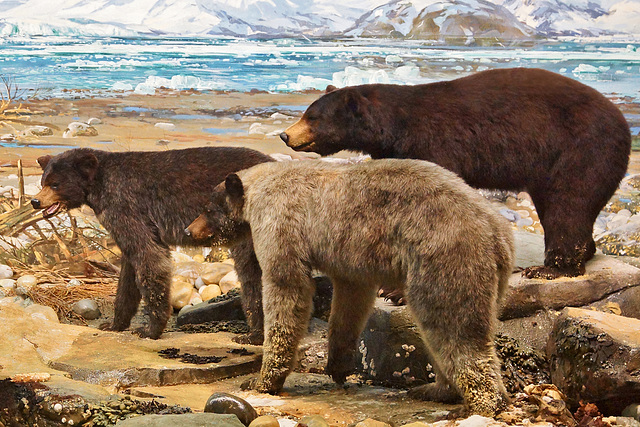Mountain Goats Diorama – Carnegie Museum of Natura…
Dall Sheep Diorama – Carnegie Museum of Natural Hi…
Caribou Diorama – Carnegie Museum of Natural Histo…
Black Rhinoceros – Carnegie Museum of Natural Hist…
Zebras and Wildebeest Diorama – Carnegie Museum of…
Zebra Duikers Diorama – Carnegie Museum of Natural…
Rocky Mountain Elk Diorama – Carnegie Museum of Na…
T-Rex – Carnegie Museum of Natural History, Pittsb…
A Cheetah Giving Chase, Diorama – Carnegie Museum…
WPTS Panther – William Pitt Union, University of P…
Neon Panther – William Pitt Union, University of P…
Ballroom – William Pitt Union, University of Pitts…
Bellefield Presbyterian Church – Fifth Avenue at T…
The Cathedral of Learning Viewed from the Schenley…
Authentic Mexican Food – Forbes Avenue between Oak…
Iroquois Building – Forbes Avenue between Meyran a…
Doors of Oakland, #7 – Semple Street below Forbes…
Groceria Merante – Bates Street at McKee Place, Pi…
The Phipps Conservatory – Pittsburgh, Pennsylvania
Palm Court – Phipps Conservatory, Pittsburgh, Penn…
Phalenopsis "Exotic Fire" – Phipps Conservatory, P…
Ascocentrum garayi Christenson – Phipps Conservato…
Purple Orchids – Phipps Conservatory, Pittsburgh,…
Triceratops – Carnegie Museum, Forbes Avenue, Pitt…
"Dinosaur" Fish – Carnegie Museum, Forbes Avenue,…
Dragonstone – Carnegie Museum, Forbes Avenue, Pitt…
The Well of Moses – Carnegie Museum, Forbes Avenue…
The Slaughter of the Innocents and the Crucifixion…
The Naxian Sphynx – Carnegie Museum, Forbes Avenue…
Carnegie Museum – Forbes Avenue, Pittsburgh, Penns…
Sowing the Fields – Heinz Memorial Chapel, Univers…
And Planting Vineyards – Heinz Memorial Chapel, Un…
Tympanum – Heinz Memorial Chapel, University of Pi…
Heniz Memorial Chapel – University of Pittsburgh,…
Tracery – Cathedral of Learning, University of Pit…
Un-Common Room Heights – Cathedral of Learning, Un…
Desks in the Yugoslav Room – Cathedral of Learning…
The Pity of it All – The Yugoslav Room, Cathedral…
Ceiling of the Swedish Room – Cathedral of Learnin…
Saint Finnian of Clonard Window in the Irish Room…
Astrolabe in the Polish Room – Cathedral of Learni…
Pittsburgh Athletic Association – Fifth Avenue aan…
The William Pitt Union – University of Pittsburgh,…
Schenley Quadrangle Viewed from the Forbes Avenue…
The Font of Learning – Cathedral of Learning, Univ…
Location
Keywords
Authorizations, license
-
Visible by: Everyone -
All rights reserved
-
794 visits
Alaskan Black Bears Diorama – Carnegie Museum of Natural History, Pittsburgh, Pennsylvania


Black bears are the smallest of the North American bears. Adult bears stand about 29 inches (.73 m) at the shoulders and measure about 60 inches (1.5 m) from nose to tail. The tail is about two inches long. Males are larger than females. An average adult male in spring weighs about 180-200 pounds (81.8 to 90.9 kg). They are considerably lighter when they emerge from winter dormancy and may be 20 percent heavier in the fall when they are fat.
The color of this bear over its entire range varies from jet black to white. A very rare white or creamy phase occurs on Kermode Island and vicinity in British Columbia. Three colors are common in Alaska. Black is the most often encountered color, but brown or cinnamon bears are often seen in South-central Alaska and the Southeast mainland. The rare blue (glacier) phase may be seen in the Yakutat area and has been reported in other parts of Southeast Alaska. Only the black color phase is seen on the islands of Southeast. Black bears may have a patch of white hair on the fronts of their chests.
Black bears are most easily distinguished from brown bears by their straight facial profile and their claws which are sharply curved and seldom over 1½ inches in length. Positive identification can be made by measuring the upper rear molar which is never more than 1¼ inches long in the black bear and is never less than that in a brown bear. Black bears have adequate senses of sight and hearing. They do have, however, an outstanding sense of smell.
The color of this bear over its entire range varies from jet black to white. A very rare white or creamy phase occurs on Kermode Island and vicinity in British Columbia. Three colors are common in Alaska. Black is the most often encountered color, but brown or cinnamon bears are often seen in South-central Alaska and the Southeast mainland. The rare blue (glacier) phase may be seen in the Yakutat area and has been reported in other parts of Southeast Alaska. Only the black color phase is seen on the islands of Southeast. Black bears may have a patch of white hair on the fronts of their chests.
Black bears are most easily distinguished from brown bears by their straight facial profile and their claws which are sharply curved and seldom over 1½ inches in length. Positive identification can be made by measuring the upper rear molar which is never more than 1¼ inches long in the black bear and is never less than that in a brown bear. Black bears have adequate senses of sight and hearing. They do have, however, an outstanding sense of smell.
- Keyboard shortcuts:
Jump to top
RSS feed- Latest comments - Subscribe to the comment feeds of this photo
- ipernity © 2007-2024
- Help & Contact
|
Club news
|
About ipernity
|
History |
ipernity Club & Prices |
Guide of good conduct
Donate | Group guidelines | Privacy policy | Terms of use | Statutes | In memoria -
Facebook
Twitter

Sign-in to write a comment.